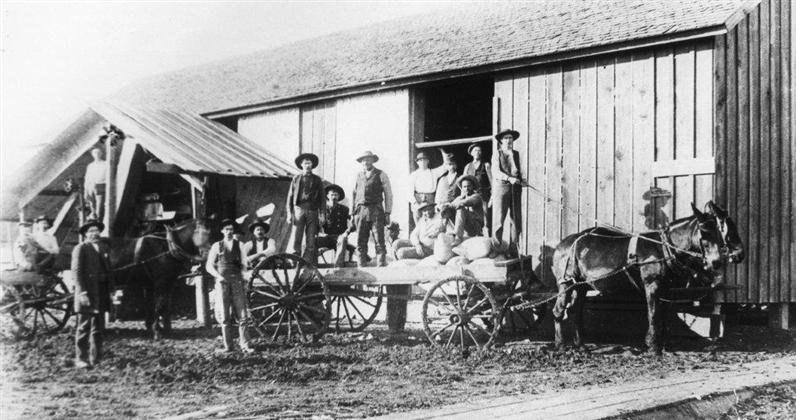Livestock
The following is from John Black's Pictorial History of Honey Grove, Texas
Livestock represented the third most important agricultural endeavor of farmers in the Honey Grove area.
In the early 19th and early 20th century, mules provided the power to plow and cultivate fields of cotton, corn, oats and wheat, to operate syrup presses, and hay balers. Mules took the farm family into own on Saturday, hauled freight and powered small construction equipment.
Though some farmers preferrerd horses, many thought mules better for everyday farm work. Mules paced themselves and seldom over worked to the point of exhaustion or death, unlike horses that will keep working until they drop. Mules do not overeat. Horses, if given the opportunity, often do so.
The number of mules a farmer owned to a large extent determined the acreage he could keep under cultivation.
One of the leading livestock raisers with James Thomas (Tank) Holt. He operated a feed lot on the north edge of Honey Grove. (information and photo from John Black's Pictorial History)




